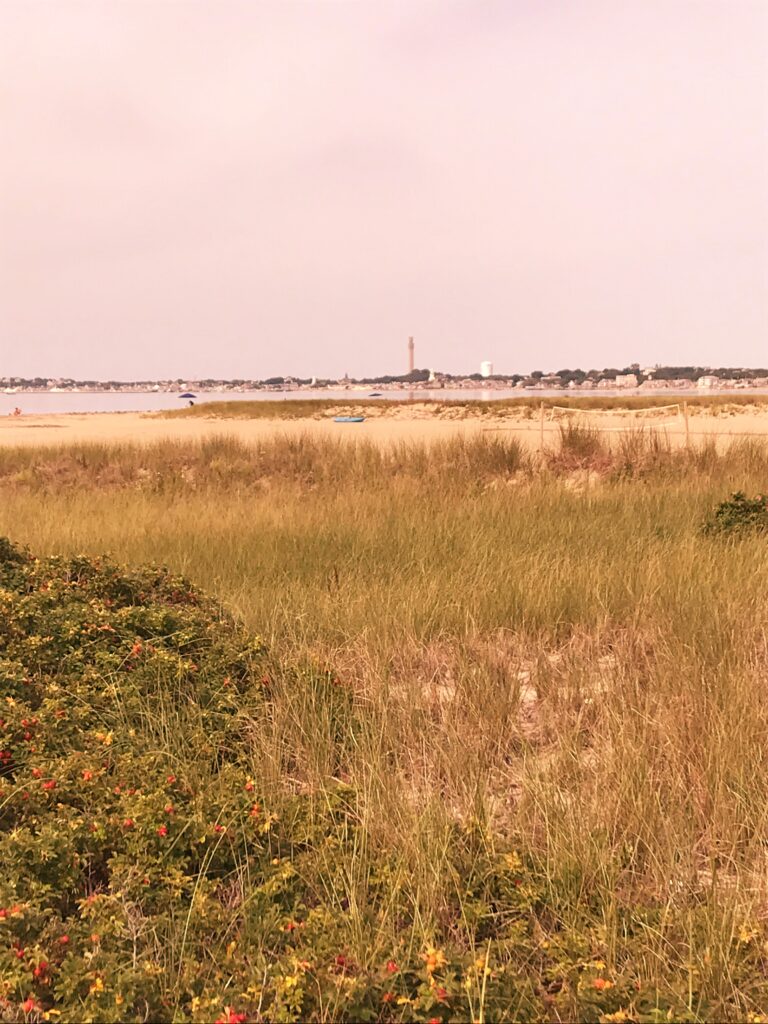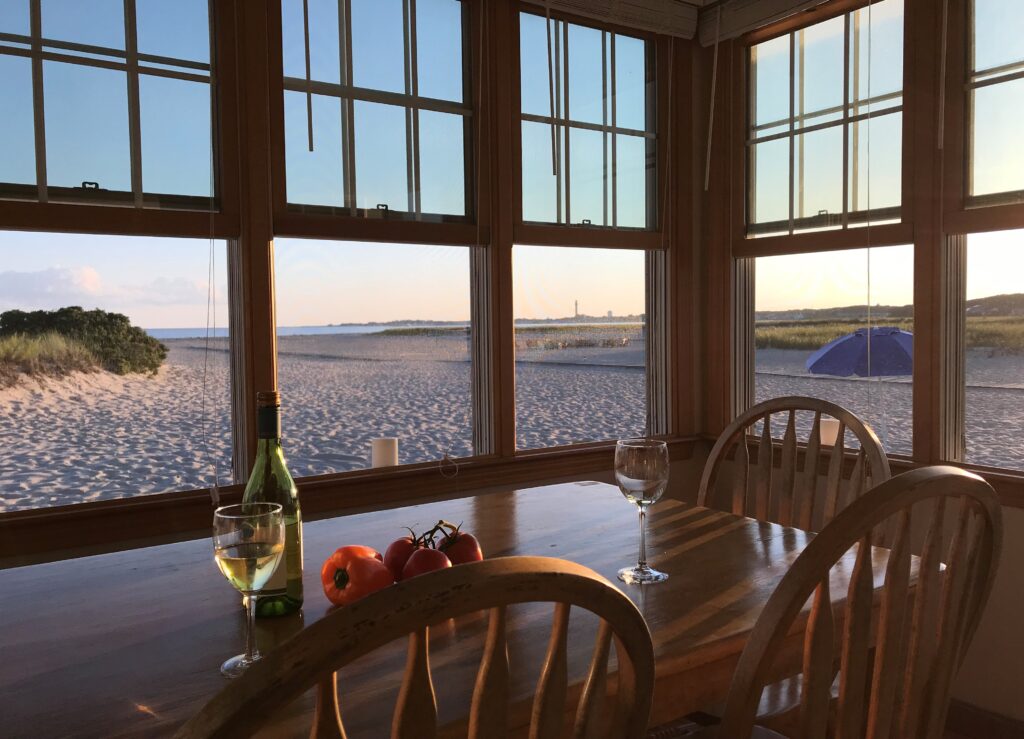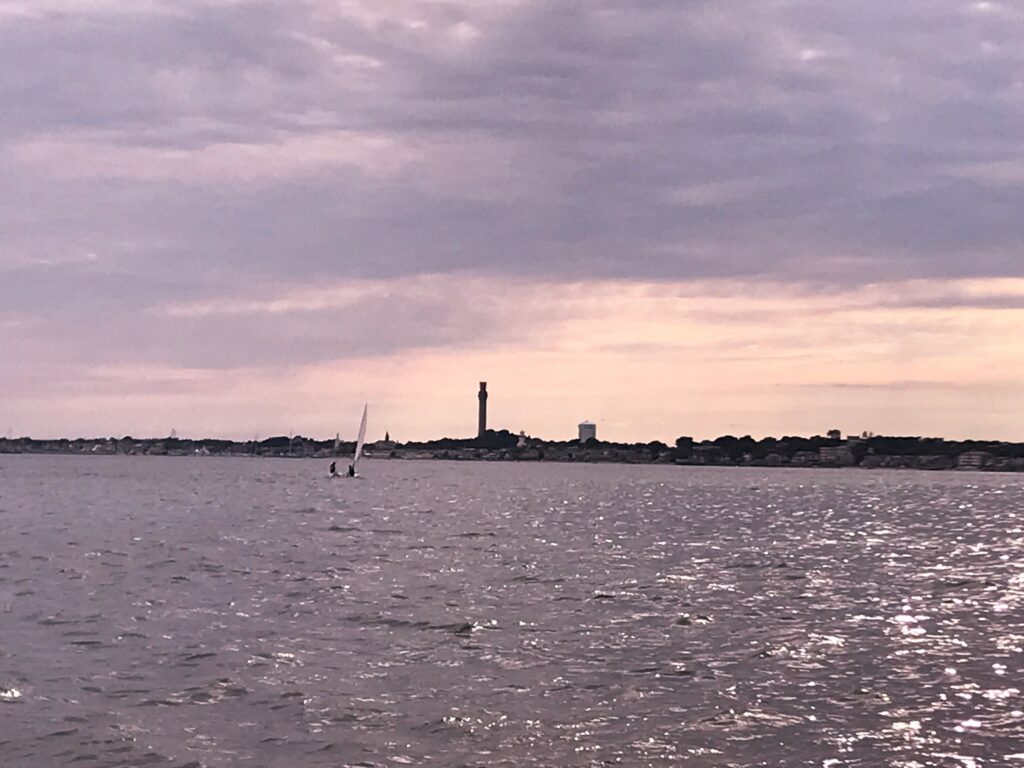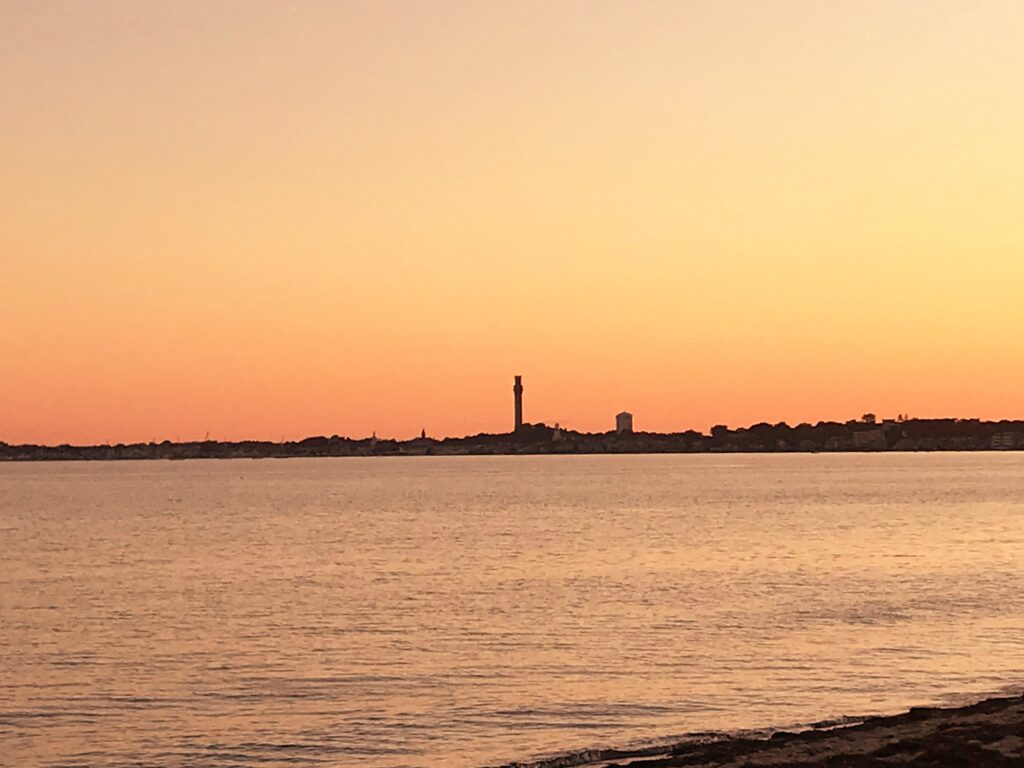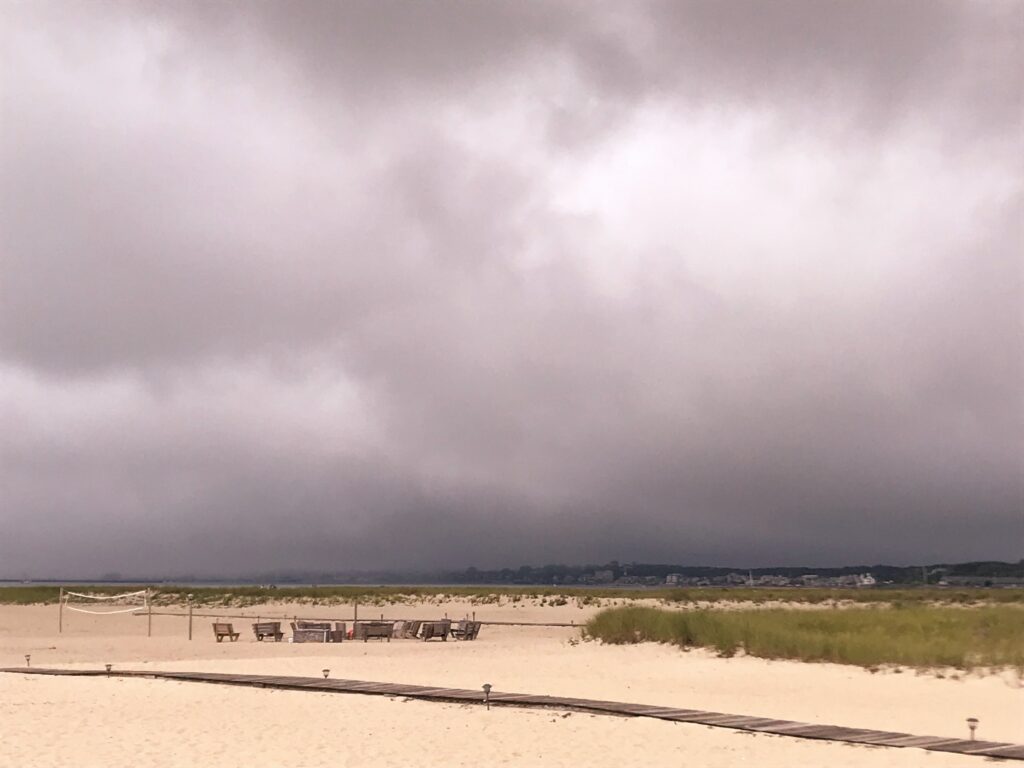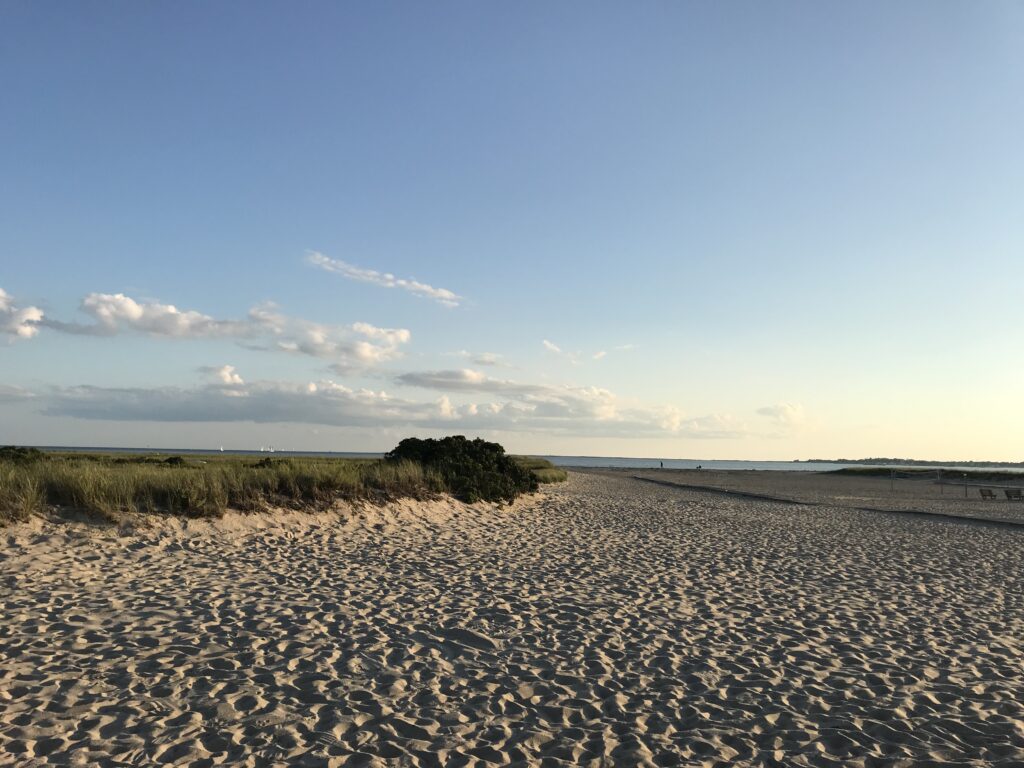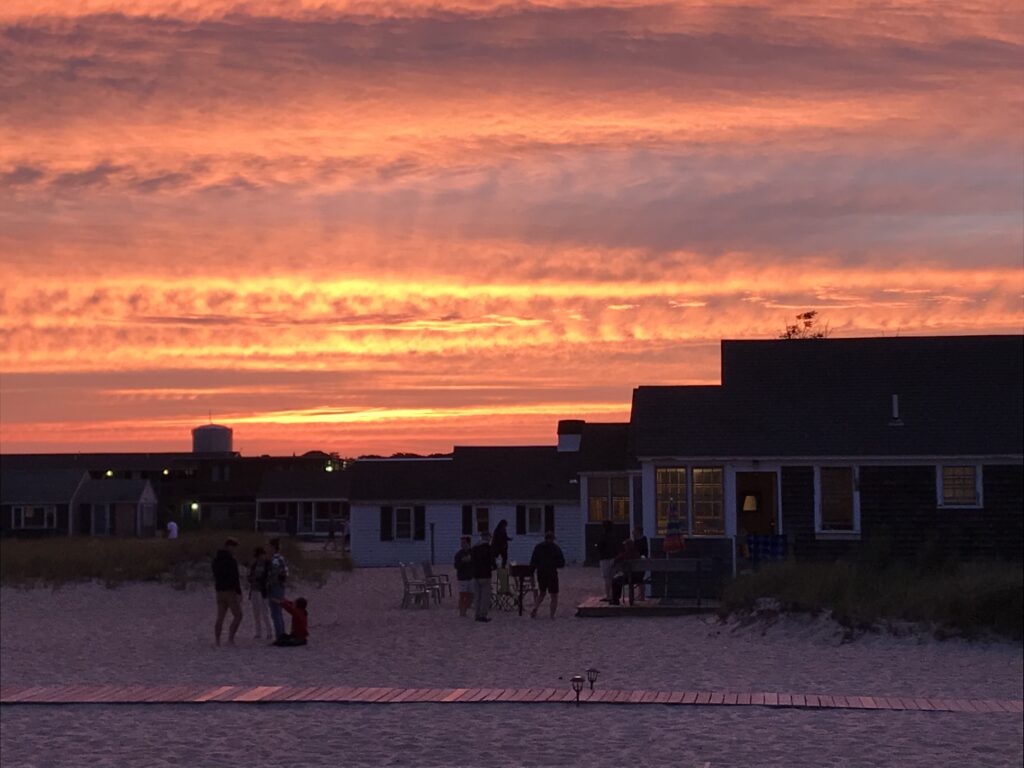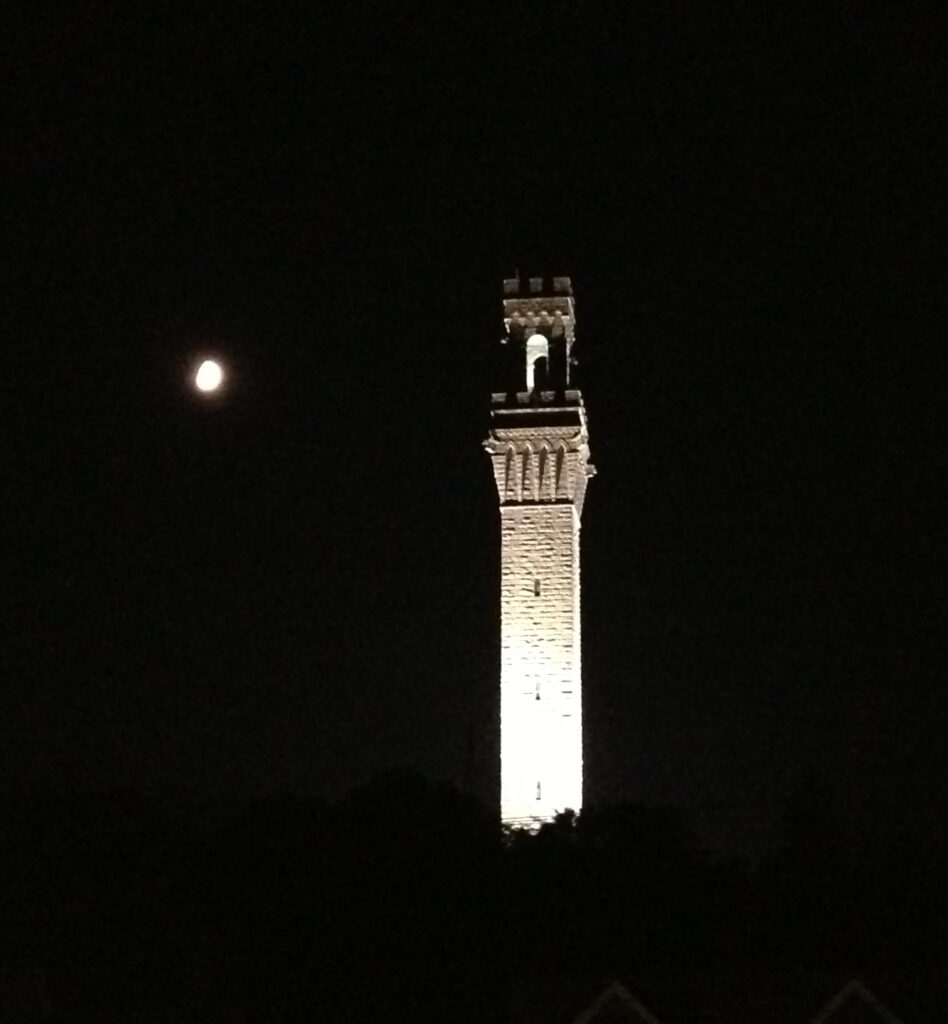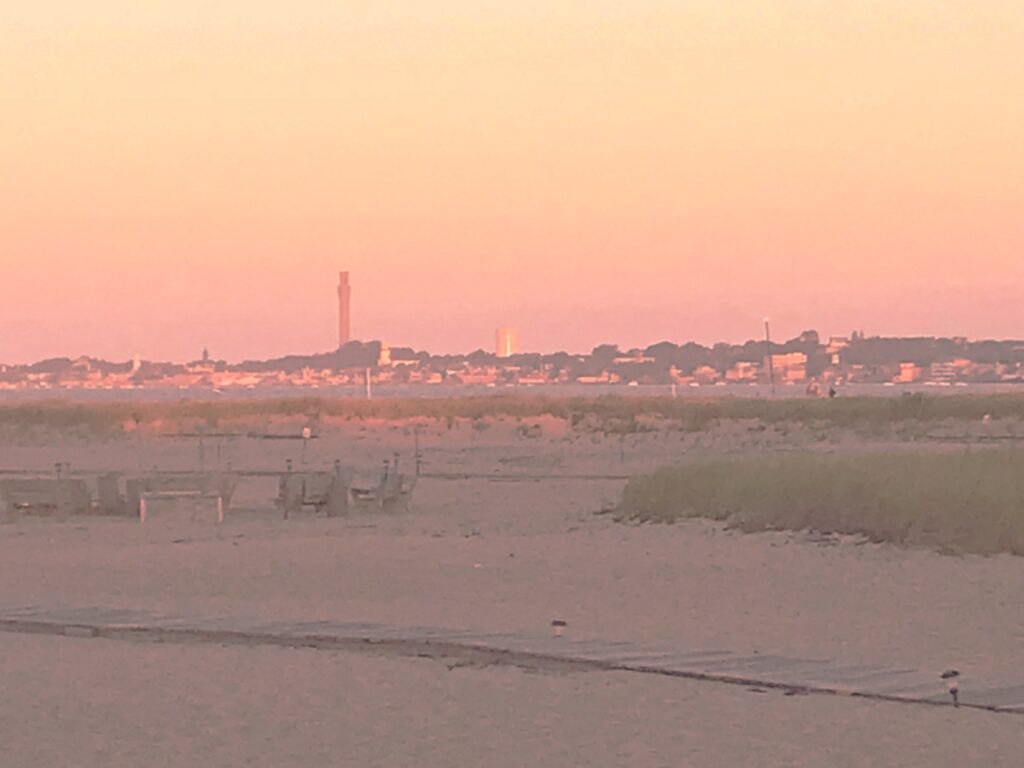Last summer, the pandemic interfered with our annual trip to Cape Cod. For the first time in twenty years, our family failed to spend part of August at the modest little cottage complex in Truro that we love so well. My husband began going there with his parents and siblings when he was a little boy. Our journey to the Cape is not just a vacation; it’s more like a pilgrimage. That narrow ribbon of land, curved like a hook into the bay, is, to us, if not quite the promised land, then something quite close to it. Certainly it’s a second home. We have no financial claim to any bit of real estate there, but we’re loyal renters. More importantly, as pilgrimage sites do, the place has claimed us as its own.
When we return, we go back to the same waterfront cottage, at the same time every year. We reconnect with many of the same families. We look out to a vast expanse of sand that leads to Cape Cod Bay, framed on each side by islands of sea grass and wild roses. The spare, simple skyline of Provincetown, about a mile away, appears to float atop the water. Its most distinctive feature, appropriately, is the tall, granite bell tower that commemorates the arrival of the original Pilgrims to the area, in 1620. Five weeks before landing at Plymouth, the Mayflower docked at what is now Provincetown Harbor. Due to rough weather, the ship had missed its mark in Northern Virginia. Anchored far north in Massachusetts, where the contract the Pilgrims had signed with the Virginia Company was deemed void, the group determined “to covenant and combine . . .together into a civil body politic,” to maintain order and the common good. So it was in Provincetown that the Mayflower Compact, an early and largely successful attempt at democracy, was written and signed. The Pilgrim Monument, now the symbol of the town’s warm, accepting and all-inclusive spirit, reminds us that great things are possible when we work together. For residents and returning pilgrims like our family, it’s a welcoming beacon. I love it that the tower is the anchoring feature in the ever-changing view from our little cottage.
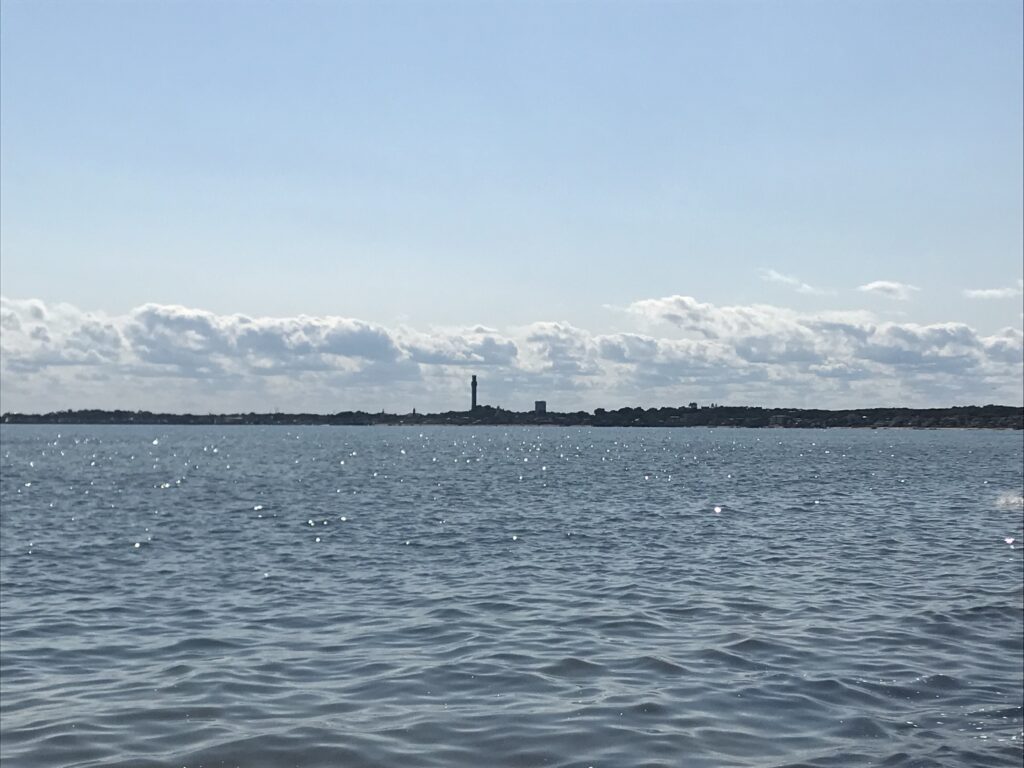
Our view toward the bay varies minute by minute with the shifting of the light, the play of the clouds and the passage of the hours. The ethereal, transformative quality of Cape light has long made this area a favorite destination for artists. Above, around noontime, the sun glints off sparkling blue water, and a line of clouds hugs the horizon, in an otherwise clear sky.
On partially overcast afternoons, the water tends to turn silvery, like a sea of mercury. It’s often on days like this that the wind picks up, and my husband, and also now our daughter, may be out windsurfing.
One evening toward sunset, a sky resembling orange sherbet settled above the town’s dark silhouette and a bay of molten lead.
The color of the sand is changeable, as well. In early mornings and late afternoons, it may take on a peachy pink cast, as in the photos above and below. The dark patches of seaweed that litter the beach no doubt seem unsightly to some. But we’ve grown so used to it that it’s no longer remarkable. It’s just more evidence of the abundant life that thrives in and around the bay.
Occasionally, as a storm or dense fog moves in, all the towers of Provincetown are rendered completely invisible.
To me, the loveliest time of the day is just before sunset, when the shadows in the sand turn a magical, brilliant blue.
Sunset itself, on every clear day, is an event that brings our small, enduring community outside in admiration and awe. The sky often glows with streaks of increasingly fiery red, orange and yellow. And then, as the brilliant colors gradually dissipate, and Cape light fades into Cape night, the Pilgrim Monument is illuminated. Its white granite glows clean and bright against the dark sky. The tower is typically the last thing I see before I close my eyes at night. How comforting to know it is there, a reassuring beacon at all hours, in all weathers and seasons.

